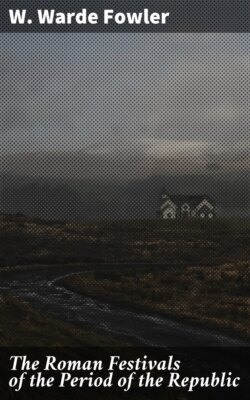Читать книгу The Roman Festivals of the Period of the Republic - W. Warde Fowler - Страница 24
На сайте Литреса книга снята с продажи.
MENSIS APRILIS.
ОглавлениеTable of Contents
There can hardly be a doubt that this month takes its name, not from a deity, but from the verb aperio; the etymology is as old as Varro and Verrius, and seems perfectly natural[186]. The year was opening and the young corn and the young cattle were growing. It was therefore a critical time for crops and herds; but there was not much to be done by man to secure their safety. The crops might be hoed and cleaned[187], but must for the most part be left to the protection of the gods. The oldest festivals of the month, the Robigalia and Fordicidia, clearly had this object. So also with the cattle; oves lustrantur, say the rustic calendars[188]; and such a lustratio of the cattle of the ancient Romans survived in the ceremonies of the Parilia.
Thus, if we keep clear of fanciful notions, such as those of Huschke[189], about these early months of the year, which he seems to imagine was thought of as growing like an organic creature, we need find no great difficulty in April. We need not conclude too hastily that this was a month of purification preliminary to May, as February was to March. Like February, indeed, it has a large number of dies nefasti[190], and its festivals are of a cathartic character, while March and May have some points in common; but beyond this we cannot safely venture. The later Romans would hardly have connected April with Venus[191], had it been a sinister month; it was not in April, but in March and May, that weddings were ill-omened.
We may note the prevalence in this month of female deities, or of those which fluctuate between male and female—a sure sign of antiquity. These are deities of the earth, or vegetation, or generation, such as Tellus, Pales, Ceres, Flora, and perhaps also Fortuna. Hence the month became easily associated in later times with Venus, who was originally, perhaps, a garden deity[192], but was overlaid in course of time with ideas brought from Sicily and Greece, and possibly even from Cyprus and the East. Lastly, we may note that the Magna Mater Idaea found a suitable position for her worship in this month towards the end of the third century B.C.
